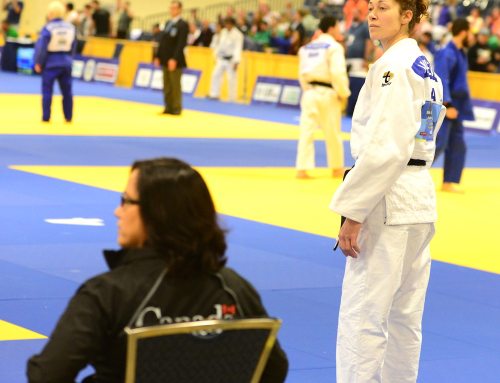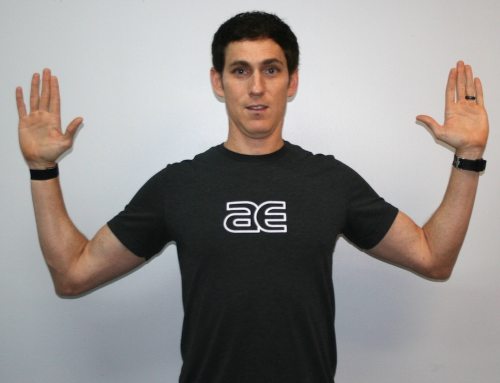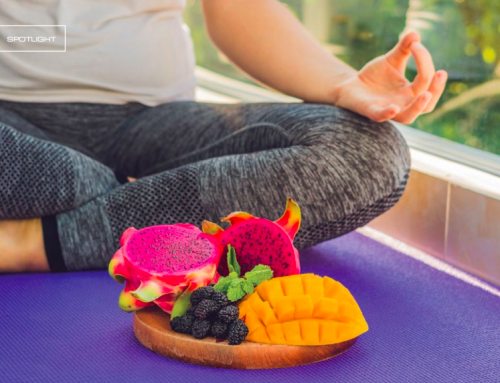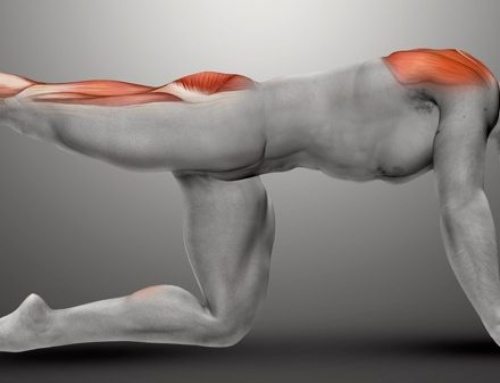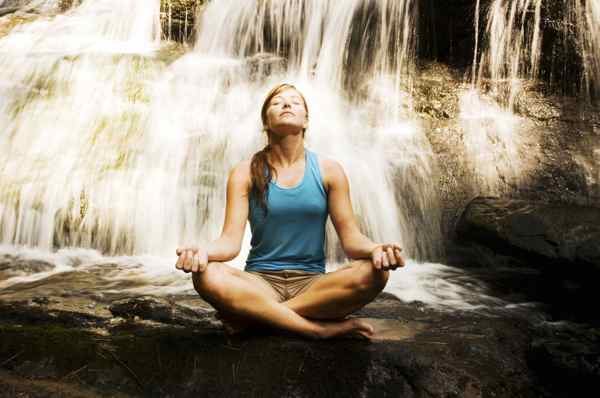
By Mandy Murphy
Meditation is often misunderstood as this “out there” thing that only very spiritual oriented people do. Yet it is becoming more mainstream for a reason. It is useful for everyone—whether you are navigating an important business meeting, having an internal debate about this week’s workout regimen, or talking with your three-year-old about leaving the park with a positive attitude. A meditation practice helps you develop skills to see your normal thoughts and behavior patterns and create a little distance to recognize your choices and to respond with more deliberate and thoughtful words and actions. Learning more about your usual thought and behavior patterns does lend itself to subsequent shifts in the way you will operate in the world and ultimately can bring more inner calm and peace.
ATTITUDE
Your attitude, mindset, and expectations are an essential part of meditation. The most important thing to know and continually remember is that there is no right way to meditate. This is where a lot of people tend to get stuck and discouraged, thus abandoning efforts to establish a meditation practice. You will most likely be tempted to strive to meditate “correctly” and to have in your mind an idea of the kind of inner experience you want to have, therefore setting yourself up for disappointment or perceived failure. By attaching to some idea of what you will experience, you take yourself away from being able to experience what is, just as it is—instead you are focused on what you think should be. Setting an intention for your mindset at the beginning of each sitting practice can be helpful and you can continually return to your intention throughout your meditation.
BENEFITS
There are many physical, mental, and emotional benefits of meditation. When practicing meditation, your heart rate and breathing slow down, your blood pressure can normalize, you use oxygen more efficiently, and you sweat less. Also, your adrenal glands produce less cortisol, your mind ages at a slower rate, and your immune function improves. With time and a regular practice, it becomes easier for your mind to clear, allowing for more creativity, a calmer response to certain situations, and more awareness of thought and behavior patterns. This practice can help bring more calm and inner peace. Also, people who meditate regularly find it easier to focus on making overall behavioral changes such as releasing unhealthy habits (like smoking or drinking) or following through on health-oriented goals.
PRACTICE
Just as an athlete has to cultivate the habit of exercise and stay dedicated to a workout regimen, anyone who has a meditation practice has had to cultivate the practice and skills. It takes dedication, practice, and discipline. Similarly, there are ups and downs with every meditator’s practice—some days settling into the practice comes more easily than others. You may feel stuck sometimes and wonder why you are doing this. But, somewhere in you, the benefits are becoming known and you keep doing it. Formal practice feeds the informal. The skills that you cultivate during formal meditation (time doing a meditation practice) transfer to everyday life (informal meditation) because your awareness of your body and mind has deepened. This carries over into your interactions with others and how you navigate various situations throughout the day. With this increased awareness gained during formal meditation, you can begin to pause throughout the day, take a deep breath (or a few), see what is going on internally, and navigate your next thought or action from a more centered, calm place. You begin to notice when your body tenses up or when you are quick to speak reactively. Without the formal practice, though, you may not be aware enough to pause, take some deep breaths, or notice tension in your body.
JUST DO IT
So where do you start? Just meditate. Set an intention. Get a timer and decide how much you time each day you want to commit (even 10 minutes is a great start!). Find a designated, quiet place. Sit and breathe. Keep doing it. Focus on your breath going in and out. When your mind wanders or you notice thinking, pause and invite yourself to return to focusing on your breath. Keep a log or journal of your experience.
ELEMENTS OF MEDITATION
Whatever type of meditation you are doing, there are some common elements to all practices:
Focusing your attention. Focusing your attention is generally one of the most important elements of meditation. Focusing your attention is what helps free your mind from the many distractions and thinking that cause stress, distraction, and worry. All types of meditation involve some kind of focus and this is what allows you to re-train your mind to concentrate and let go of the continual thoughts that come into your mind. You can focus your attention on such things as a specific object, an image, a mantra, or your breathing. Don’t fret when your mind wanders. Just return to your focus of attention.
Relaxed breathing. Deep breathing is very relaxing and often used to begin the practice of meditation. Taking in and being aware of deep breaths allows you to release tension as well as bring more oxygen into your body, prompting more relaxation.
A quiet location. Practicing meditation may be easier if you’re in a quiet spot with few distractions—no television, radios, or cell phones. It is also useful to have a designated place for your meditation practice. This helps build the habit and train your mind and body to settle into the practice when in this designated place. As you get more skilled at meditation, you may be able to do it anywhere.
A comfortable position. There are several suggested positions for meditating that encourage you to be comfortable as well as alert. You can sit cross-legged, use a kneeling bench, sit in a chair, or lie down with your lower legs elevated, resting on a chair. It is important to find comfort yet also to keep your body alert to help stay awake during meditation.
TYPES OF MEDITATION
There are many different ways to meditate and there are many practices that originated from different spiritual traditions. Some types of meditation include:
Awareness of Breath. Can meditating be as simple as paying attention to your breath for a few minutes? Yes! In whatever position works best for you (see suggested positions below), close your eyes, and start to pay attention to your breathing. Breathing through your nose, you can hold your attention on feeling the breath come in and out of your nose or you can also feel the breath fill your torso. As your mind wanders, just pause and refocus your attention on your breath coming in and out of your body.
Mindfulness meditation. A practice Buddhists call vipassana or insight meditation, mindfulness is the art of becoming deeply aware of what is here, right now. You focus on what’s happening in and around you at this very moment, and you become aware of all the thoughts and feelings that are taking your energy from moment to moment. You can start by watching your breath, and then move your attention to the thoughts going through your mind and the feelings in your body. With experience, you can even expand your concentration to include the sounds and sights around you. The key is to watch without judging or analyzing; become aware of the thoughts without getting caught up in the story lines or emotions.
Body scan. The point of concentration for this meditation is a specific part of your body. Bringing awareness to an isolated place in your body, you can simply notice any feelings of sensation. The attention is held there a few minutes and then moved to another part of your body. You can be as specific (right, big toe) or general (right foot) as you want and time allows, leaving enough time to travel the whole body. This type of meditation can be particularly useful for learning how to focus away from the thoughts of your mind and to pay attention to your often overlooked body.
Walking meditation. This one gets the body involved also. It can be outside or you can walk back and forth in a room. Pay attention to the movement of your legs and body as you walk, and to the feeling of your feet contacting the ground. When your mind wanders, just keep bringing it back to the process of walking and breathing. Meditating outside in this way can be difficult because of the distractions. If you do it outside, find a quiet place with level ground.
Guided meditation. Sometimes called guided imagery or visualization, this method of meditation allows you to form mental images of places or situations you find relaxing. You try to use as many senses as possible, such as smells, sights, sounds and textures. You may be led through this process by a guide or teacher.
Mantra meditation. Many people find it easier to keep their mind from wandering if they concentrate on something specific. A mantra can help. This is a word or phrase you repeat as you sit in meditation, and in some traditions, it is chosen for you by an experienced master. If you are working on this alone, you can use any word or phrase that works for you, and can choose to repeat it either aloud or in your head as you meditate.
Yoga. You perform a series of postures and controlled breathing exercises to promote a more flexible body and a calm mind. As you move through poses that require balance and concentration, you’re encouraged to focus less on your thoughts and more on the moment and the body.
HELPFUL RESOURCES
When you feel stuck or when you identify that you need some additional support to help you establish your practice, check out the following helpful resources:
Mindfulness-Based Stress Reduction Program
An 8-week program based on Jon Kabot-Zinn’s work with mindfulness at University of Massachusetts. This beginner-oriented course exposes participants to various meditation practices and encourages participants to cultivate a personal, daily practice. Guided meditations are provided with course materials to support your personal practice.
Local options include:
UNC Medical Center (Chapel Hill, NC): http://www.med.unc.edu/phyrehab/pim/mindfulness-program/basic-foundation-course-mindfulness-based-stress-reduction
CMC-Mercy (Charlotte, NC): http://charlottemindfulnessliving.org
Duke Integrative Medicine (Durham, NC): www.dukeintegrativemedicine.org/index.php/2009012037/classes-events-training/mindfulness-based-stress-reduction.html
Books & Online Resources:
Henepola Gunaratana, Mindfulness in Plain English (Wisdom Publications, 1991)
Jack Kornfield, Meditation for Beginners (Sounds True Publications, 2008)
Insight Meditation Community of Washington, DC (Tara Brach): www.imcw.org/how-meditate
# # #
Mandy Murphy is a Life Coach with Mindsight Coaching www.mindsightcoaching.com and an Endurance Magazine Team Member.


